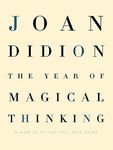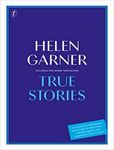Cognitive Literary Explorations of Life-Writing: Memory, Emotion and the Autobiographical Exchange - FROM THE ...
←
→
Page content transcription
If your browser does not render page correctly, please read the page content below
RESEARCH SEMINAR
Thursday 2 September, 2021
Cognitive Literary Explorations of Life-Writing:
Memory, Emotion and the Autobiographical
Exchange
Dr Merril Howie
merril.howie@mq.edu.au
Department of Media, Communication
Creative Arts, Literature and Language
Macquarie University
12 “Reading autobiography makes us remember our own childhoods, our own families, our own experiences; it makes clear that we make sense of our own lives with reference to the lives of others” (David McCooey, Artful Histories, 4).
Hilary Mantel (1952 - ) – British author of diverse oeuvre - novels short stories and autobiographical writing. Two- 5 time Man Booker prize-winner for her Tudor novels Wolf Hall (2009) and Bring Up the Bodies (2012. Janet Frame (1924 – 2004) – Innovative New Zealand writer of novels, short stories, YA fiction and poetry. International recognition followed the publication of her autobiographical trilogy between 1983-85: To the Is-land, An Angel at My Table (adapted into an award-winning film by Jane Campion) and The Envoy from Mirror City. Helen Garner (1942 - ) – “one of Australia’s most gifted writers” (McDonald 269), experimental author, unconstrained by generic boundaries, producing award- winning works of fiction, non-fiction and film. Noted for the subjective stance she brings to her literary journalism. Joan Didion (1934 - ) – iconic Californian author of fiction, non-fiction and film. Defining contributor to the emergence of New Journalism: combining fictional techniques with personal subjectivity and objective commentary.
6 Cognitive Literary Analysis of the Literary Memoir’s Affective Architecture Investigative Model: Foundation Stone: Autobiographical Memory Structural Pillars: Emotion and Empathy Analyses: sustained bifocal considerations of the representation (text) and potential impact (reader) of memory, emotion and empathy.
7 “We are taught to be chary of early memories. [ . . .] Though my early memories are patchy, I think they are not . . . a confabulation, and I believe this because of their overwhelming sensory power . . . As I say “I tasted’, I taste, and as I say ‘I heard’, I hear: I am not talking about a Proustian moment, but a Proustian cine-film” (Mantel, Giving Up the Ghost, 23- 4).
8 “I have an investment in accuracy [ . . .] Part of our difficulty in trusting ourselves is that in talking of memory we are inclined to use geological metaphors. We talk about buried parts of our past and assume the most distant in time are the hardest to reach . . . I don’t think memory is like that: rather that it is like St Augustine’s ‘spreading limitless room’. Or a great plain, a steppe, where all the memories are laid side by side, at the same depth, like seeds under the soil” (Mantel, Giving Up the Ghost, 24-5).
“If I were alone could he come back to me on the smile?
9
Would he say get a table at Ernie’s?
PSA and the smile no longer exist, sold to US Airways and then
painted off the planes.
Ernie’s no longer exists, but was briefly re-created by Alfred
Hitchcock, for Vertigo. James Stewart first sees Kim Novak
at Ernie’s.
Later she falls from the bell tower (also re-created, an effect)
at Mission San Juan Bautista.
We were married at San Juan Bautista.
On a January afternoon when the blossoms were showing
in the orchards off 101.
When there were still orchards off 101.
No. The way you got sideswiped was by going back” (Didion, 52-3).10
“Reading autobiography”, as McCooey has observed,
“makes us remember our own childhoods, our own
families, our own experiences” (4). This study’s analytical
model, which can be adapted for scholarship into other
rhetorically persuasive, emotive texts, such as new
journalism or poetry, allows a more detailed
understanding of the cognitive and literary
interrelationships that enable the two-way exchanges with
life-writing to which McCooey refers.
This multidisciplinary mode of enquiry can thereby
enhance our knowledge of how the eloquent
configuration of experience into art, can conversely
engender memorable, emotional involvements that
transform art into experience.
--------Finis-----------Works Cited 11 Bolens, Guillemette. The Style of Gestures: Embodiment and Cognition in Literary Narrative. The John Hopkins UP, 2012. Brown, Steven and Paula Reavey. “Turning around on experience: The ‘expanded view’ of memory within psychology.” Memory Studies, vol. 8, no. 2, 2015, pp. 131-150. Coplan, Amy. “Empathic Engagement with Narrative Fictions.” The Journal of Aesthetics and Art Criticism, vol. 62, no. 2, 2004, pp. 141-152. Couser, G. Thomas. Memoir: An Introduction. Oxford UP, 2012. Damasio, Antonio. The Feeling of What Happens: Body, Emotion and the Making of Consciousness. Vintage, 2000. Didion, Joan. The Year of Magical Thinking. Vintage International, 2007. Eakin, Paul John. Living Autobiographically: How We Create Identity in Narrative. Cornell UP, 2008. Fernyhough, Charles. Pieces of Light. Harper Perennial, 2012.
12
Works Cited (Cont’d)
Frame, Janet. To the Is-land: Autobiography 1. Paladin Books, 1987.
Garner, Helen. True Stories: The Collected Short Non-Fiction. Text Publishing, 2017.
Gornick, Vivian. “Truth in Personal Narrative”, in TRUTH in nonfiction: essays, edited by
David Lazar, University of Iowa Press, 2008, pp. 7-10.
Hampl, Patricia. “Memory and Imagination.” The Anatomy of Memory. An Anthology,
edited by James McConkey, Oxford UP, 1996, pp. 201-211.
Kakutani, Michiko. “The Year of Magical Thinking Books/Nonfiction.” International Herald
Tribune, 6 October, 2005, 2005, p.10.
Keltner, Dacher et al. Understanding Emotions. John Wiley & Sons, Inc, 2014.
Kuzmicova, Anezka. “Literary Narrative and Mental Imagery: A View from Embodied
Cognition.” Style, vol 48, no. 3, 2014, pp. 275-293.
Marcus, Laura. “Life Writing”, in The Edinburgh Introduction to Studying English Literature,
edited by Dermot Cavanagh et al., Edinburgh UP, 2010, pp. 148-157.
Mantel, Hilary. Giving Up the Ghost. Fourth Estate, 2013.13 Works Cited (Cont’d) McAdams, Dan. The Stories We Live By: Personal Myths and the Making of the Self. The Guildford Press, 1993. McCooey, David. Artful Histories. Cambridge UP, 1996. Oatley, Keith and Maja Djikic. “Writing as Thinking.” Review of General Psychology, vol. 12, no. 1, 2008, pp. 9-27. Richardson, Alan. “Memory and Imagination in Romantic Fiction” in The Memory Process, edited by Suzanne Nalbantian et. al., Massachusetts Institute of Technology Press, 2011, pp. 227-296. Ross, Michael and Anne Wilson. “Constructing and Appraising Past Selves”, in Memory, Brain, and Belief, edited by Daniel Schacter and Elaine Scarry. Harvard UP, 2000, pp. 231-258. Sanford, Anthony and Catherine Emmott. Mind, Brain and Narrative. Cambridge UP, 2012.
14 Works Cited (Cont’d) Schacter, Daniel. Searching for Memory: The brain, the mind and the past. BasicBooks, 1996. Schank, Roger and Tamara Berman. “The Pervasive Role of Stories in Knowledge and Action”, in Narrative Impact: Social and Cognitive Foundations, edited by Melanie Green et al., Psychology Press, 2013, pp. 287-313. Semino, Elena. “Descriptions of Pain, Metaphor, and Embodied Simulation”, in Metaphor and Symbol, vol. 25, no. 4, 2010, pp. 205-226. Starr, Gabrielle. “Multisensory Imagery”, in Introduction to Cognitive Cultural Studies, edited by Lisa Zunshine. The John Hopkins UP, 2010, pp. 275-29. Vandenberg, Kathleen. “Joan Didion’s memoirs: substance & style.” Prose Studies, vol. 39, no. 1, 2017, pp. 39-60
You can also read





















































